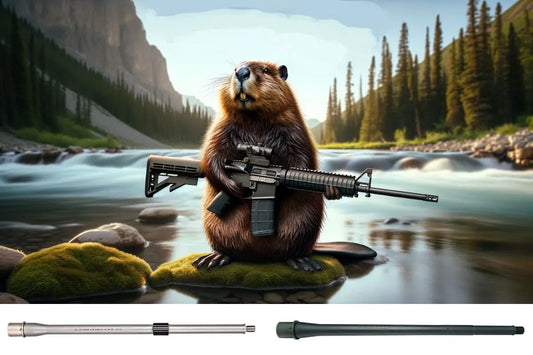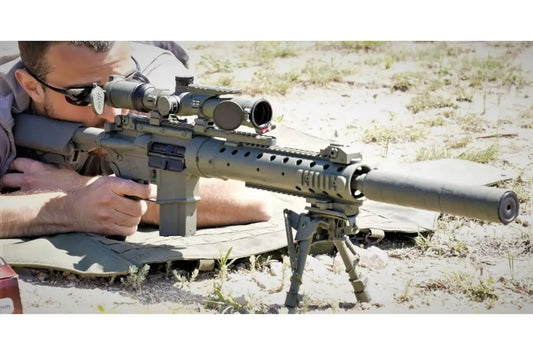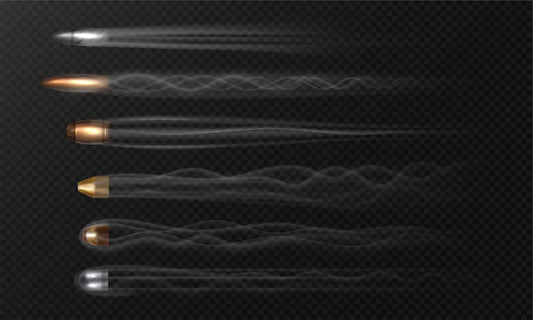
Puncture and Slash-Resistant Soft Armor: 7 Compelling Reasons to Upgrade Your Protection, Plus Top Product Picks
In an ever-evolving world where personal safety has become paramount, many individuals are turning to body armor as a critical line of defense. Soft armor, in particular, remains a popular choice thanks to its lightweight design and ease of mobility. However, when selecting body armor, many overlook a key vulnerability: the risk of punctures and slashes from edged weapons or sharp objects. Simply put, standard ballistic vests aren’t always designed to protect you against knives, spikes, broken glass, or other hazards that can pierce fabrics more readily than a bullet.
This article provides an in-depth look at why you should consider soft armor that is both puncture-resistant and slash-resistant, offering a multi-faceted shield against a broader range of threats. We’ll delve into the top reasons to upgrade to puncture- and slash-resistant materials, highlight the vital design features to look for, and recommend specific products to guide you toward the right purchase. Along the way, you’ll also hear from industry experts who have witnessed firsthand the life-saving benefits of advanced armor technology.
1. The Changing Landscape of Threats
Modern personal protection must consider more than just bullets. An increase in close-quarters confrontations, active shooter situations, and random acts of violence has dramatically changed the risk profile for civilian, law enforcement, and security personnel alike.
“One of the biggest misconceptions about standard ballistic vests is that they automatically protect against stabs and slashes,” says John Farnam, founder of Defense Training International and renowned firearms instructor. “Ballistic protection is just one piece of the puzzle; edged weapons call for specific materials and design considerations.”
More Than Bullets
Knives, spikes, needles, and other sharp implements pose a very different kind of threat from bullets. A bullet’s blunt impact is distributed over a larger area upon striking a ballistic panel. By contrast, a sharp point can concentrate force into a small area, making it easier to slice through or punch holes in fabrics not specifically engineered to stop them.
Increased Need for Multi-Threat Protection
In everyday scenarios—especially in densely populated urban areas—the likelihood of facing an assailant with an edged weapon can be on par with facing one armed with a gun. Civilian assaults involving knives or blunt weapons continue to be reported worldwide. Additionally, security professionals, law enforcement officers, and other first responders often deal with individuals carrying improvised sharp objects like broken glass or even sharpened plastic.
Key Takeaway: Investing in soft armor specifically rated for puncture and slash resistance adds a vital protective layer that anticipates the broader range of real-world threats.
2. Technology Behind Puncture and Slash Resistance
Understanding how puncture- and slash-resistant armor works can give you insight into why it’s so important—and why it differs from standard ballistic vests.
High-Strength Fibers and Tight Weaves
These specialized vests often use ultra-high-molecular-weight polyethylene (UHMWPE) or aramid fibers (like Kevlar®). However, the difference lies in the weave and layering system. Protective manufacturers may incorporate a tighter weave, resin enhancements, or additional layering specifically intended to trap and disperse the energy of a sharp weapon.
Advanced Coatings and Composites
Beyond just the fiber composition, coatings and composites can significantly improve stab and slash resistance. Some vests integrate resin layers or composite plates that are flexible yet rigid enough to disrupt a blade’s penetration.
“The science behind multi-threat armor has advanced rapidly,” notes Dave Young, founder of ARMA Training and an advisor to multiple law enforcement agencies. “We are now seeing armor systems that remain lightweight and flexible, yet meet rigorous standards for both ballistic and edged-weapon threats.”
Testing Standards: NIJ 0115.00
The National Institute of Justice (NIJ) has established standards like NIJ 0115.00 specifically for stab and spike resistance. If you are considering multi-threat soft armor, look for vests tested or rated under NIJ 0115.00 or other relevant international standards, such as the U.K.’s CAST standards.
Key Takeaway: The best soft armor for puncture and slash protection uses an array of advanced materials, weaves, and coatings, and often carries specialized certifications beyond standard ballistic ratings.
3. Comfort, Weight, and Mobility Considerations
One reason people hesitate to add more layers of protection is the fear that doing so will add bulk, weight, or discomfort. With modern technology, those concerns are increasingly mitigated.
Light and Flexible
Today, body armor manufacturers strive to achieve the “golden triangle” of comfort, protection, and mobility. High-tech fibers like Kevlar® XP and newer polyethylene-based fabrics deliver robust slash and puncture protection without significantly increasing weight. Coupled with ergonomic designs and layering strategies, these vests can be worn comfortably for extended periods, making them suitable for security personnel, law enforcement, or anyone who needs consistent coverage.
“Gone are the days when adding stab protection meant a bulky vest that restricted movement,” states Sarah Holmes, product specialist at Safe Life Defense. “We have significantly reduced both weight and thickness while enhancing coverage and comfort.”
Breathability
Look for vests featuring moisture-wicking layers or ventilated panels. These features help regulate body temperature and keep you more comfortable during prolonged wear or strenuous activities. A combination of sweat-wicking fabric and mesh panels can ensure that the vest doesn’t trap excessive heat against your torso.
Adjustability and Fit
A vest that fits poorly can hamper mobility and may fail to protect critical areas. Always opt for gear with adjustable shoulder straps, side panels, or cummerbund systems that allow you to customize the fit. You should be able to move freely without feeling constricted when you perform everyday tasks—or more tactical maneuvers if needed.
Key Takeaway: Modern advances in materials and design mean that multi-threat soft armor can remain light, breathable, and flexible, allowing for a comfortable fit that doesn’t sacrifice protection.
4. Who Benefits Most from Puncture- and Slash-Resistant Soft Armor?
While practically anyone can benefit from enhanced protection, certain professionals and civilian users are at a higher risk of encountering sharp weapons or improvised tools.
Law Enforcement Officers
Patrol officers routinely interact with suspects who could be carrying knives or other edged devices. Corrections officers also face threats from makeshift prison shanks. Slash- and puncture-resistant vests give them added confidence and security in these close-quarters interactions.
Security Personnel
From nightclub bouncers to private security contractors, security professionals frequently handle volatile or unpredictable situations that can escalate quickly. A slash-resistant vest can prevent life-threatening injuries from a sudden attack with a broken bottle or knife.
EMS and First Responders
Though they aren’t actively seeking confrontations, first responders often come into contact with individuals in distress. The unpredictability of these scenarios can lead to assaults. A multi-threat vest can offer an extra layer of security for emergency medical technicians and other frontline workers.
Civilians in High-Risk Areas
Even everyday civilians might find themselves living or working in high-crime neighborhoods. The presence of random stabbings, muggings, or break-ins highlights the need for a vest that can handle both ballistic and edged threats.
Enthusiasts and Prepared Citizens
Personal safety enthusiasts and those who believe in being prepared for “worst-case scenarios” may want the peace of mind that puncture-resistant armor provides. Regardless of the setting, having gear that covers both ballistic and sharp-object threats can be a prudent choice.
“As threats evolve, so must our protective measures,” says Oliver Roberson, a former U.S. Army officer and co-founder of Citizens Defense Academy. “We see more civilians becoming proactive about their safety, and modern soft armor that covers multiple threats is a logical step.”
Key Takeaway: Multi-threat armor is especially beneficial for professionals in law enforcement, security, and emergency services, as well as civilians who live or work in environments where assaults with edged weapons are a realistic risk.
5. Top Reasons to Choose Soft Armor That Also Resists Punctures and Slashes
Below is a concise list of the core reasons why opting for puncture- and slash-resistant soft armor might be the best decision for you:
-
Comprehensive Protection
With additional layers or specialized weaves, you are prepared for both ballistic and non-ballistic threats. -
Versatility
Whether you’re on duty in law enforcement or simply want to stay safe in uncertain environments, multi-threat vests adapt to various scenarios. -
Improved Confidence
Knowing you are protected from a wide range of attacks instills a sense of security that can help you stay composed under stress. -
Cutting-Edge Materials
High-tech fibers and composites offer robust protection without the added bulk and discomfort of older models. -
Increasing Threat Complexity
As criminals become more resourceful, the probability of encountering improvised edged weapons rises. -
Future-Proofing
Investing in a vest that meets NIJ ballistic and NIJ/CAST slash and puncture standards ensures your armor remains relevant against modern and evolving threats. -
Professional Recommendations
Military veterans, law enforcement trainers, and self-defense experts all acknowledge the pivotal role that multi-threat armor can play in personal safety.
“The safety margin you gain from a multi-threat vest cannot be understated,” points out Massad Ayoob, a leading figure in firearms training and self-defense. “It’s about having that extra peace of mind when the unexpected happens.”
6. Key Features to Look for in a Puncture- and Slash-Resistant Vest
Not all vests are created equal, and that’s especially true for those that claim puncture or slash resistance. If you’re in the market, keep an eye out for these critical features:
1. NIJ or CAST Certification
Always verify that the vest meets the NIJ 0115.00 standard (or an equivalent rating like CAST in the U.K.) for stab resistance. This ensures rigorous testing has been performed to validate the manufacturer’s claims.
2. Ergonomic Design
Look for strategically placed panels that cover vital organs and wrap around the torso without hindering your movement. Many modern designs now feature flexible side panels and adjustable shoulder straps.
3. Multi-Layered Fabrics
The best vests often incorporate multiple types of fabrics (e.g., Kevlar® + polyethylene layers + specialized coatings) for a more robust shield against both bullets and blades.
4. Comfort Features
Look for padded shoulder straps, mesh interior linings, and breathable materials that draw moisture away from the body. The more comfortable it is, the more likely you are to wear it consistently.
5. Weight-to-Protection Ratio
Evaluate how much the vest weighs relative to its level of threat protection. Modern materials can deliver impressive knife and spike resistance without the heaviness you might expect.
6. Additional Pockets or MOLLE Compatibility
For professionals or security personnel, integrated pouches or MOLLE webbing can make a vest more versatile, allowing you to carry magazines, medical kits, and other essential gear.
Key Takeaway: Balancing comfort, coverage, certification, and design is crucial when choosing puncture- and slash-resistant armor. Don’t forget to assess real-world usability alongside protection specs.
7. Recommended Products and Brands
Choosing the right product can be overwhelming with all the available options. To help guide you, here are some top picks that have demonstrated quality, reliability, and robust multi-threat protection.
1. Safe Life Defense FRAS (Flexible Rifle Armor System)
- Key Features:
- Rated to defend against most pistol calibers and has advanced edges for slash and stab resistance.
- Flexible yet rigid enough to withstand rifle rounds in certain configurations, offering multi-threat protection that goes beyond standard ballistic vests.
- High-tech materials ensure a relatively low weight for the level of protection.
“Safe Life Defense’s FRAS is a game-changer,” remarks Sarah Holmes, product specialist at Safe Life Defense. “It offers a unique combination of ballistic, slash, and even rifle round protection in a flexible package.”
2. PPSS Group Stab Resistant Vests
- Key Features:
- Known worldwide for their blunt trauma protection as well as slash and puncture resistance.
- Features an ultra-lightweight profile with excellent breathability, ideal for law enforcement and security teams.
- Can be worn discreetly under uniforms or standard clothing.
3. EnGarde Dual Use vests (e.g., “Panther” series)
- Key Features:
- Incorporate advanced aramid fibers for robust ballistic protection with an added layer for stab/spike resistance.
- Ergonomic designs that prioritize mobility and comfort.
- Custom sizing and adjustable straps ensure a snug fit without sacrificing coverage.
4. AR500 Armor Hybrid IIIA+ Panels
- Key Features:
- Known for ballistic performance, these panels also offer limited stab and slash resistance.
- An economical choice for those seeking an entry-level multi-threat solution.
- Can be inserted into various carriers, offering flexibility for users who already own a preferred carrier system.
5. BulletSafe VP3 Vest
- Key Features:
- NIJ Level IIIA ballistic protection paired with an optional stab-resistant upgrade.
- Reputation for affordability and reliability, making it a popular choice for security guards, bouncers, and budget-conscious buyers.
- Lightweight and adjustable, suitable for extended wear.
6. Spartan Armor Systems “Hercules”
- Key Features:
- Heavy-duty ballistic performance that also includes enhanced coverage for slash and puncture threats.
- MOLLE-compatible for attaching additional gear.
- Designed with first responders in mind, it emphasizes quick donning and doffing mechanisms.
Key Takeaway: The market offers a wide range of multi-threat armor options. Prioritize models with verified stab/spike ratings and proven ballistic performance. When possible, try on vests in person or consult sizing guides to ensure a proper fit.
8. How to Care for and Maintain Puncture- and Slash-Resistant Armor
Any piece of body armor is an investment, and proper maintenance will prolong its service life while ensuring optimal performance.
Follow Manufacturer Instructions
Each vest is unique, often requiring different care methods based on fabric types and coatings. Always consult the user manual before you start cleaning or storing your vest.
Cleaning Best Practices
- Spot Clean: Rather than machine-washing ballistic panels, use a damp cloth with mild detergent to spot clean.
- Detachable Carriers: Many vests have removable outer carriers that are machine washable, simplifying hygiene while protecting the ballistic panels.
- Air Dry: Never subject ballistic or stab-resistant panels to high heat (like dryers or direct sunlight). Heat can degrade the fibers over time.
Storage Recommendations
- Flat Storage: Lay the vest flat to prevent creasing, which can compromise the material over time.
- Cool, Dry Area: Avoid humid environments or direct sunlight. Moisture and UV rays can weaken fibers.
- Check the Expiration: Most ballistic and stab-resistant materials come with a recommended service life (often around five years). If your vest is nearing expiration, consider testing or replacing the panels.
“Regular inspection is key,” emphasizes Dave Young of ARMA Training. “A quick scan for any tears, loose stitching, or weird smells can help you identify potential problems early.”
Key Takeaway: Proper upkeep—including careful cleaning, correct storage, and frequent inspections—ensures that your multi-threat vest remains ready to protect you when you need it most.
9. Frequently Asked Questions (FAQs)
1. Can I add stab/slash panels to my existing ballistic vest?
In some cases, manufacturers offer “inserts” or “upgrade panels” that can add a layer of stab/slash resistance to an existing carrier. However, not all vests are compatible with these add-ons. Always consult with the vest manufacturer to ensure proper fit and performance.
2. Is there a significant price difference between standard ballistic vests and stab-resistant vests?
Multi-threat vests can be slightly more expensive due to the additional materials and testing required. However, the difference in cost is often justified by the increased versatility and peace of mind.
3. Will a puncture-resistant vest also protect me from needles or syringes?
Depending on the specific rating (particularly spike ratings under NIJ 0115.00), some vests offer a measure of needle protection. However, needle protection is not always guaranteed, so check if the vest specifically mentions this capability.
4. How can I ensure the vest fits me correctly?
Take accurate measurements of your chest, waist, and torso length. Many manufacturers offer sizing charts and even phone consultations or online fitting guides. A properly fitted vest should cover your vital organs without severely restricting your movement.
5. Is multi-threat armor legal for civilians?
In most jurisdictions, it’s legal for civilians to purchase and own soft body armor, although some places restrict or regulate ownership. Always check your local and state laws to ensure compliance.
Key Takeaway: Upgrading or augmenting your existing ballistic vest with puncture and slash resistance can be done in various ways, from dedicated multi-threat vests to add-on panels. Always verify compatibility and follow legal guidelines.
10. Expert Quotes on the Importance of Multi-Threat Protection
- John Farnam, Defense Training International
“One of the biggest misconceptions about standard ballistic vests is that they automatically protect against stabs and slashes. Ballistic protection is just one piece of the puzzle; edged weapons call for specific materials and design considerations.”
- Dave Young, ARMA Training
“The science behind multi-threat armor has advanced rapidly. We are now seeing armor systems that remain lightweight and flexible, yet meet rigorous standards for both ballistic and edged-weapon threats.”
- Sarah Holmes, Safe Life Defense
“Gone are the days when adding stab protection meant a bulky vest that restricted movement. We have significantly reduced both weight and thickness while enhancing coverage and comfort.”
- Massad Ayoob, Firearms Trainer and Author
“The safety margin you gain from a multi-threat vest cannot be understated. It’s about having that extra peace of mind when the unexpected happens.”
- Oliver Roberson, Citizens Defense Academy
“As threats evolve, so must our protective measures. We see more civilians becoming proactive about their safety, and modern soft armor that covers multiple threats is a logical step.”
Key Takeaway: These industry experts collectively underscore the fundamental importance of having multi-threat protection in a world where threats are rarely one-dimensional.
11. Making Your Decision: Final Thoughts
In summarizing the debate of whether you should buy soft armor that is also puncture and slash resistant, the evidence points clearly toward “yes.” From the changing nature of threats to the technological advancements in materials and design, opting for multi-threat soft armor is a prudent choice for anyone serious about personal safety.
- Coverage and Versatility: The ability to protect against a wider range of threats, from handguns to knives and broken glass, underscores the unmatched versatility of multi-threat armor.
- Modern Comfort: Thanks to innovations in high-strength fibers and ergonomic designs, you don’t have to compromise comfort to achieve a superior level of protection.
- Professional Endorsements: Experts from law enforcement trainers to security professionals consistently advocate for the enhanced protection offered by multi-threat vests.
- Investment in Safety: While the cost may be marginally higher than a standard ballistic vest, the extra protection can be a lifesaver in unpredictable, real-world situations.
Ultimately, the decision to invest in puncture- and slash-resistant soft armor boils down to your personal risk assessment and willingness to be prepared. Whether you work in a high-risk profession or simply want greater peace of mind, the future-proof nature of multi-threat armor makes it a compelling addition to your protective arsenal.
For an extensive range of puncture- and slash-resistant soft armor solutions, visit RMADefense.com.




